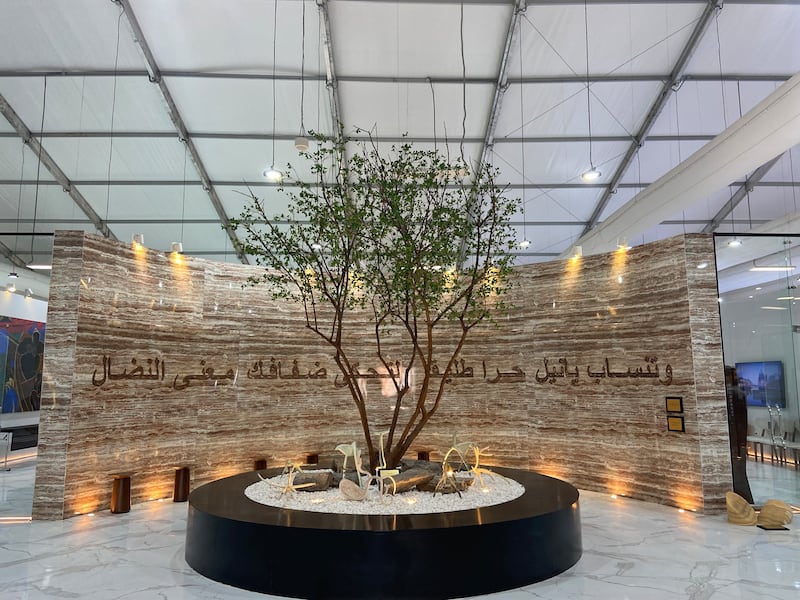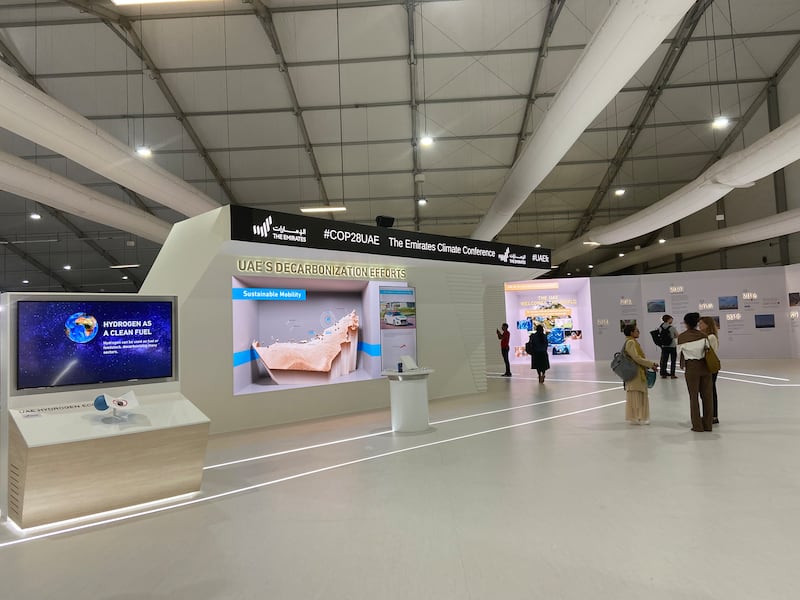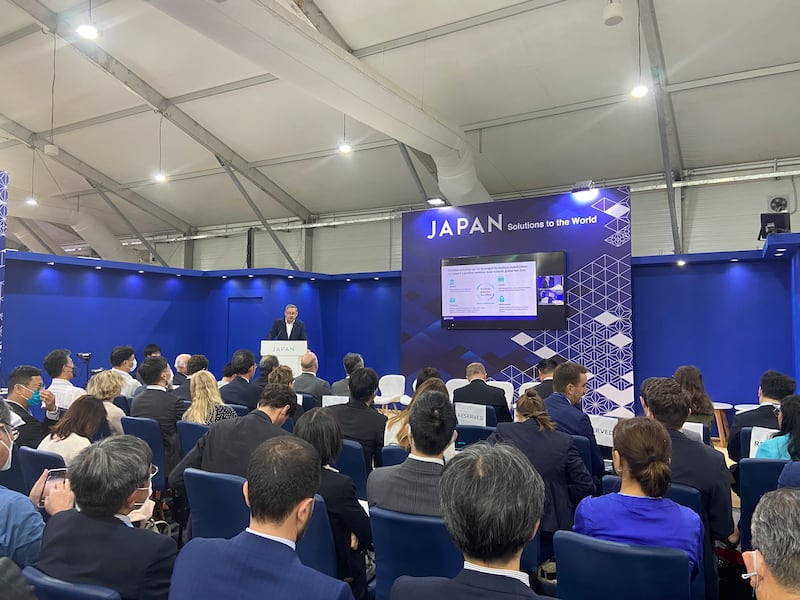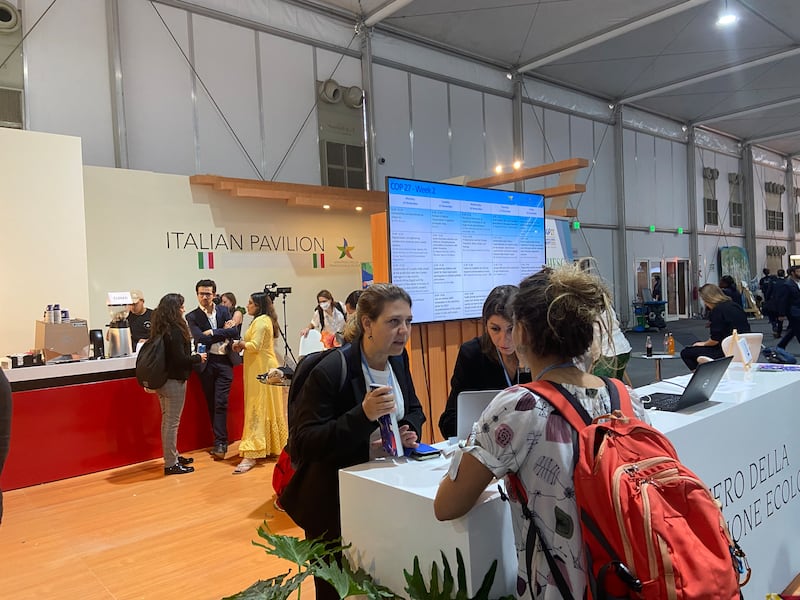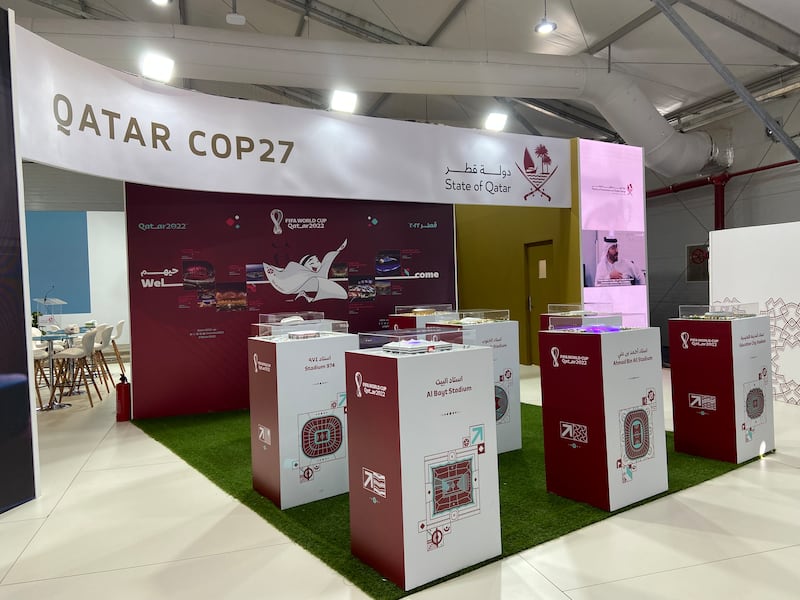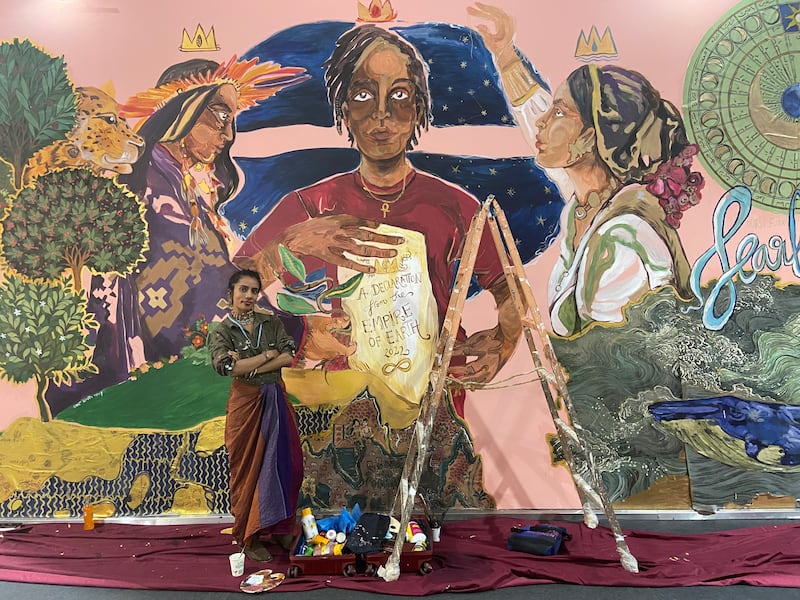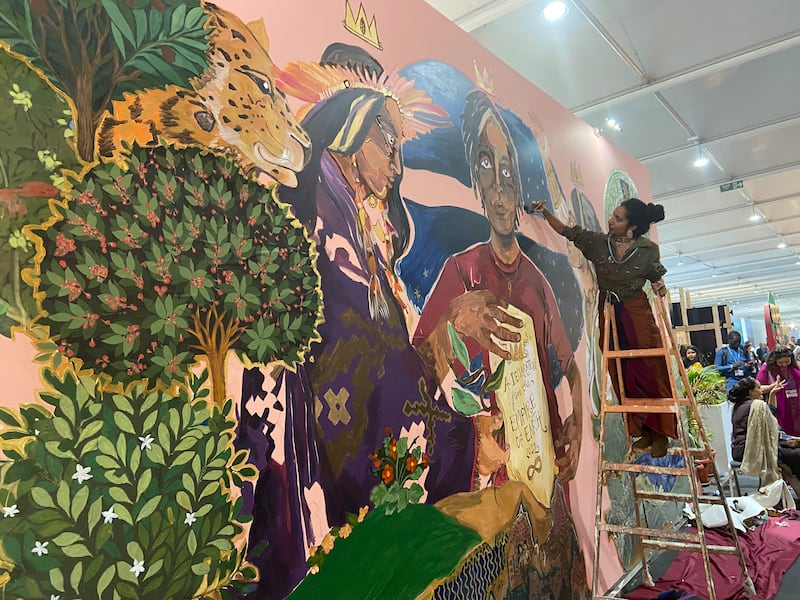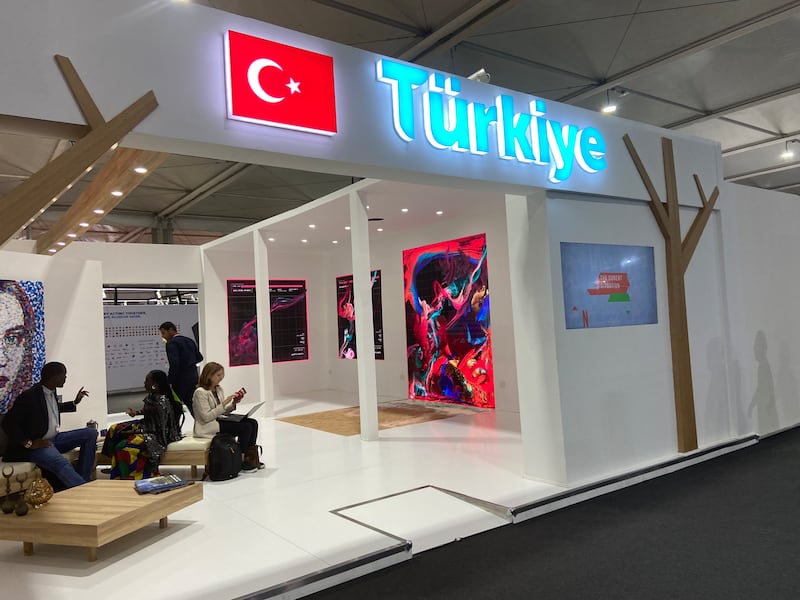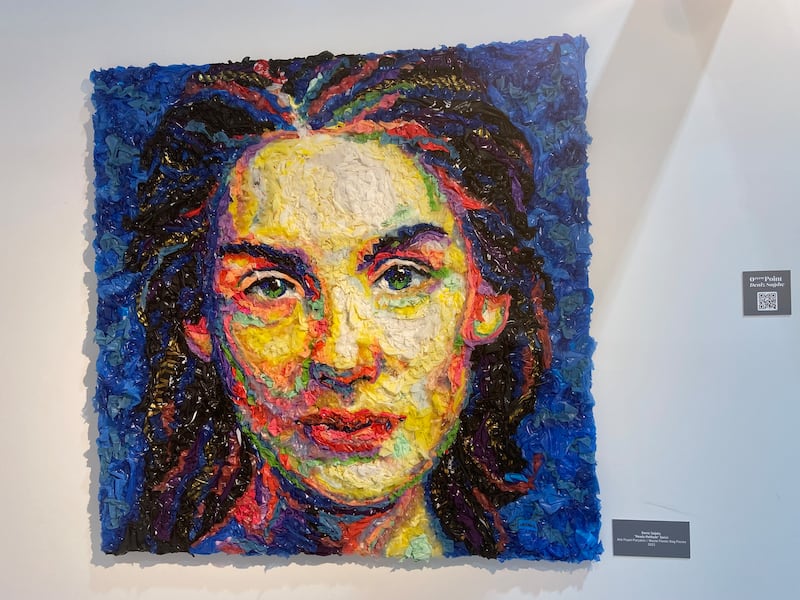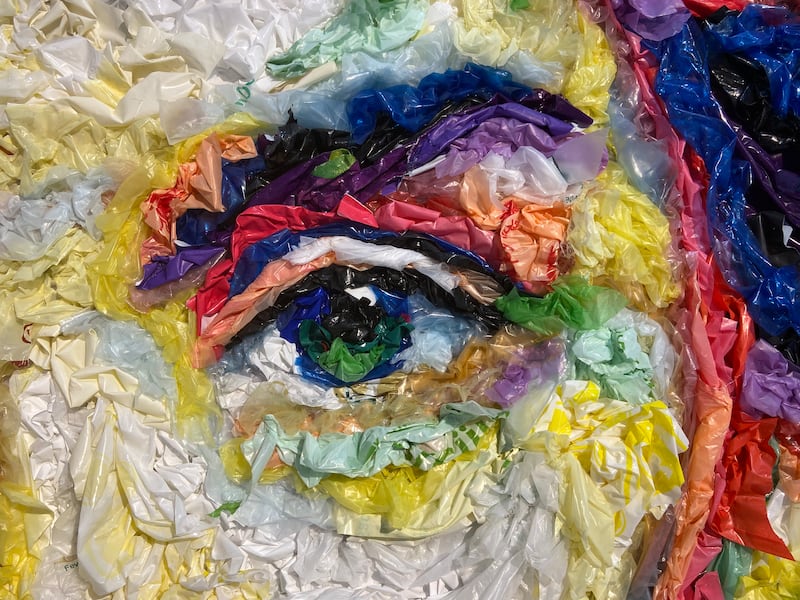As climate negotiators at Egypt’s Cop27 try to thrash out a deal on divisive subjects such as loss and damage, there is a markedly different atmosphere in the conference's Blue Zone.
There are 141 pavilions in five large buildings that make up the UN-managed area, a maze of countries, non-governmental organisations and coalitions.
Each pavilion has its own schedule of events. The sounds of chatter and back-to-back panel discussions fill the air.
The UN climate summit in Sharm El Sheikh is due to finish on Friday. But the Blue Zone shows no signs of slowing down.
Young climate activists stage protest inside Cop26 Blue Zone
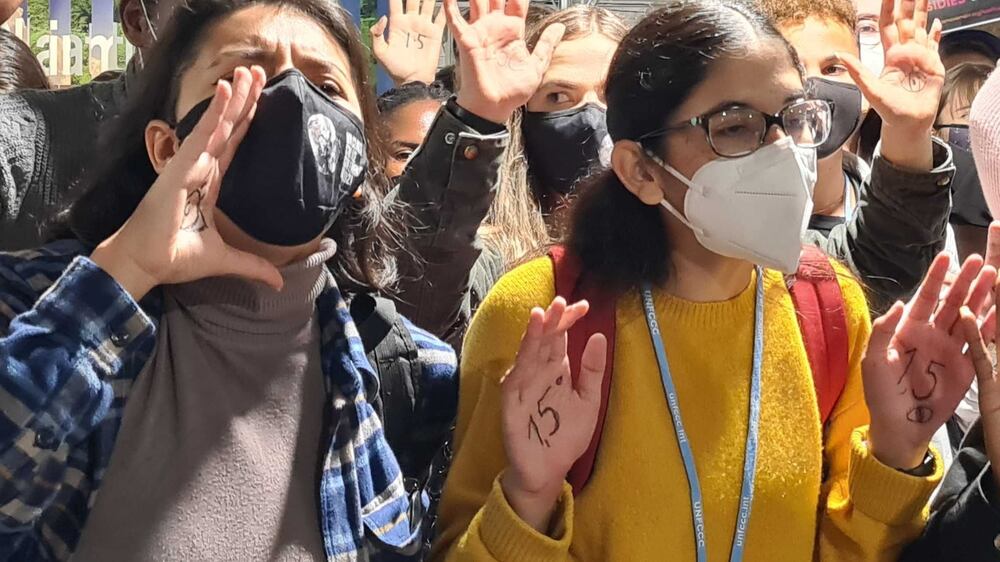
In some ways, it is like a mini-Dubai Expo, but with less fanfare, no queues to get into the Germany pavilion and certainly no sushi in Japan or rose ice cream in Saudi Arabia. Given the limited food and drink options at the conference, delegates take notice when Italy offers coffee or South Africa serves mocktails.
Many of the country pavilions reflect their cultures. The Nordic building is sleek and Senegal's offers a colourful showcase. In Kuwait's pavilion the writing is mostly in Arabic and Venezuela's uses Spanish.
The large Qatar pavilion includes a section highlighting the country’s hosting of the World Cup, which kicks off on Sunday, and the eight stadiums built.
But overall, the Blue Zone is serious business with countries and organisations often demonstrating their climate commitments and achievements.
Groups such as the World Bank, International Labour Organisation and International Atomic Energy Agency highlight some of the key issues and solutions.
Others, such as Moana Blue Pacific, Climate Justice and Indigenous Peoples, sound the alarm bell about climate change emergencies.
At Moana Blue Pacific, a 250-square-metre area managed by the Secretariat of the Pacific Regional Environment Programme, a sign says: “Keep global temperature rise below 1.5C, and we can survive.”
The tiny Climate Justice pavilion is covered in messages, such as “We demand climate reparations” and “No false solutions”.
While the Pakistan pavilion makes no reference to the summer floods that displaced 33 million people, it displays a simple message: “What goes on in Pakistan won’t stay in Pakistan.”
The military and political crisis in Ukraine is evident in the fact that there is no Russian pavilion and the Ukrainian display is a sombre affair.
While there is much to learn and take away from all of the pavilions, here are four that stand out from the crowd:
Egypt's artistic talent celebrates heritage
As the Cop27 host, Egypt’s pavilion is front and centre for guests entering the Blue Zone. Designed and curated by award-winning green architect Sarah El Battouty, it is meant to represent Egypt’s heritage and landscape.
The main hall includes the Tree of the Virgin Mary from Sinai. It is protected by a curved wall inscribed with the national anthem of the Egyptian armed forces, based on a poem from Farouk Gweida: “Oh Nile run wild and free to tell the stories of the great patriotic acts.”
Eight sculptures by artist Bahaa Amer, created from fallen twigs, are nestled around the tree.
The Hall of Knowledge and Science, which emphasises the need for climate action to be based on science, includes the Dynastic Bird sculpture by the late Adam Henein.
Other artworks highlight the responsibility of humans to protect nature. They include a piece called Misr El A’taa by Farghali Abdel Hafez, which shows a woman stretching out her hands to give back all of the blessings she received from the sea and sand.
The stone architecture reflects the “very solid history, very solid heritage” of Egypt, Ms El Battouty said in an interview with Cairo Scene. The mashrabeya displays an innovation for cooling and privacy that was created in Egypt.
Ms El Battouty is the founder of ECOnsult, a UN Climate Change global ambassador and a senior adviser to the Egyptian President.
UAE shows off its climate credentials

After Cop27, Egypt will pass the baton to Cop28 host the UAE. The journey has already begun, with the UAE pavilion promoting the “The Emirates Climate Conference”.
The large exhibition space at this year’s event includes a timeline of the country’s climate actions. The pavilion highlights its decarbonisation efforts, for example through sustainable mobility and green hydrogen.
It also showcases Etihad’s “sustainable flight”, which in October 2021 reduced carbon emissions by 72 per cent compared to the equivalent flight operated in 2019. The sustainable flight avoided regions of the atmosphere that were super-saturated with ice, and where harmful trails from jet engines were likely to form. This prevented the production of about 64 tonnes of CO2 emissions.
Celebrating storytelling
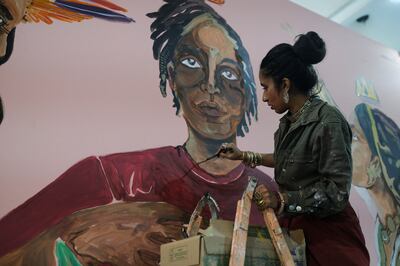
The children and youth pavilion has come to life, with a large mural being painted by Indian artist Shilo Shiv Suleman in the second week of the summit.
Ms Suleman founded Fearless Collective in 2012 following the protests that shook the country in response to the Delhi gang rape and murder, known as the Nirbhaya case. The movement aims to transform “fear to love through the co-creation of beauty in public space”.
Fearless has created more than 40 public monuments in 16 countries, working with marginalised communities, such as Muslim and Dalit women in India, indigenous peoples in Brazil and North America, and Syrian and Palestinian refugees in Lebanon.
“Similarly now with the climate crisis, what we’re seeing is there is a lot of fear,” Ms Suleman told The National. “The fear is very valid and the danger is real. But at the same time, we believe for actions to be sustainable, we need to create a space of love.”
The mural she is creating at Cop27 is meant to “bring back a sense of reverence and wonder for nature as the source of creation and life”.
She has painted three women: Puyr Tembe, a campaigner from the Amazon for indigenous tribes; Ugandan climate justice activist Vanessa Nakate; and Pakistani environmentalist Ayisha Siddiqa, the co-founder of Fossil Free University and Polluters Out.
“When you come to a space like this and you see a lot of bureaucrats, technocrats, businessman, in all honesty it sometimes feels like a bit of a trade show. And we believe that storytelling — the stories that we tell and the cultures that we create — is ultimately what shifts public opinion,” Ms Suleman said.
Waste finds a new creative life
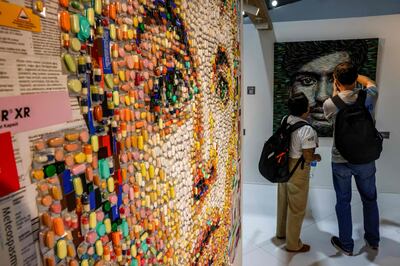
Turkey’s pavilion includes 14 pieces of striking art made from waste in the exhibition project OZero point.
Visual artist Deniz Sagdic upcycles waste objects and materials, such as plastic bags and packaging, to turn them into works of art.
“Waste can be used as art and, if used in the right way, the lifetime will be increased by two centuries,” Ms Sagdic told The National.
While she does not consider herself an activist per se, she said: “Everyone in their own specialty can do something and people should ask what they can do.”
